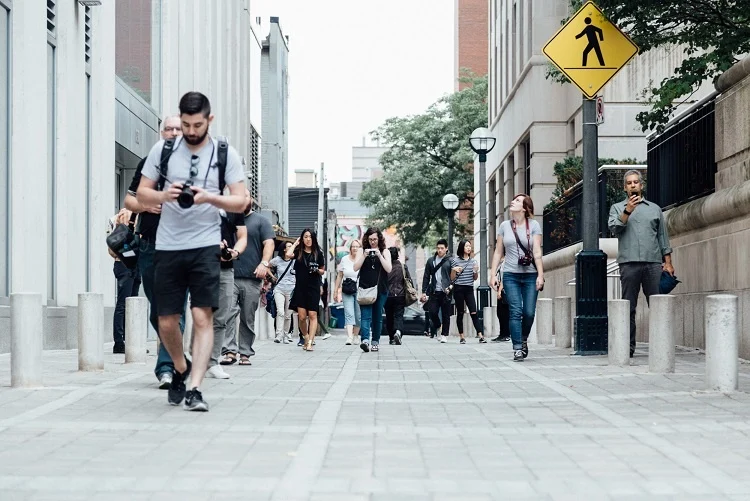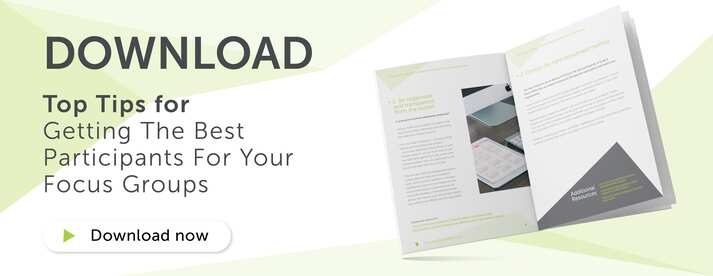
5 top tips: feasibility testing for your qualitative market research
Carrying out a feasibility assessment is an essential part of any successful market research study. In fact, when starting your qualitative market research project one of the first things you need to ask yourself is whether or not your sample size is achievable so you can make sure your study is reliable and representative of your audience.
A good feasibility test is based on solid statistics, so it’s important to make sure you do enough research to ensure you don’t run into any problems further down the line. From previous experience in your chosen area to utilising social media and even reaching out to experts, by taking your time to review all the available info you can be completely confident you've got a feasible sample size that’s based on proven statistics and reliable research rather than rough estimates.
1. Do your research
One of the very first steps is to do your research. Are there any secondary research sources you could use to help? And do any of these sources allow you to drill down into your target demographic? Resources that provide insights into consumer trends can be really useful as they offer industry specific stats that can help you make informed decisions about the feasibility of your project.
Google Trends is a good example that allows you to see what people are searching. It offers topical data at certain times of the year and is therefore really useful for retail sample sizes, for example if you were conducting research about seasonal fashion and needed to find out about summer shopping habits. Another good tool is Google Keyword Planner which allows you to search for phrases that your demographic might type so you can get a better indication of how many people are searching for certain terms.
The Consumer Barometer also provides helpful info on consumer usage trends such as information on shopping habits and online media consumption, even breaking usage down into particular demographics which can be really useful when looking at feasibility. Other great websites for new perspectives include MINTEL and the Office of National Statistics.
2. Utilise social media
Another useful tool to help you determine the feasibility of your project is social media. Social media usage has hit an all-time high this year, with Facebook estimating a whopping 2.19 billion monthly active users worldwide in early 2018. Not only does that mean researchers can access a bigger target audience than ever before, but platforms such as Facebook also allow you to reach out to more specific audiences than ever before too by targeting certain criteria such as age, gender, lifestyle, education and even relationship status, as well as page likes, location, brand preferences and past purchases. Not only that, but it will also give you an estimated audience size based on the criteria you have selected so you can get an idea of exactly how many people you can reach out to, helping you decide how achievable your sample size is.
LinkedIn can also give you an idea of the discussions people are currently having, and joining groups surrounding certain subjects enables you to get a feel for how many people you can access. Not only that, but you can also join in with discussions to directly reach out to specific people you might want to include in your research and start to test the water. And don’t forget Twitter, where you can search for specific hashtags that relate to a product, service, or even an industry that you are conducting research in.
By utilising social media, you can get a clear idea of the types of users and the sheer volume of people that are interacting with these topic areas online, which can help you understand how many people in each area could be relevant for your study. It’s accurate, allows you to reach unbeatable audiences, and it’s completely free - which makes it a winning tool in our eyes!
3. Look at your own experience
It’s also worth looking at your own experience in your chosen research area. Take a look at some of the past sample sizes for projects that either you or your colleagues have conducted. Were the sample sizes achieved? If not, why not? And what can you learn from them? Likewise if you are using an agency for your recruitment, ask them about their previous experiences too.
By looking at previous results and identifying any problems, you can make informed decisions to make sure you don’t repeat any mistakes and arrive at a feasible sample size. And if a certain approach or sample size was successful in the past? Then it might just be worth incorporating it into your current project too!
4. Manage your clients’ expectations
Incidence rates will naturally vary depending on what audience you are looking to reach - which will of course have an impact on your sample size. For example, if you are looking to carry out research with people in London who commute to work every day, then you're going to have a pretty big pool of potential respondents to choose from. However, if you’re focusing more on the quality of your respondents over quantity and want to target women aged 25-40 who commute by foot and earn upwards of £50k a year, it will be a much smaller sample size so you’ll have to manage your clients’ expectations accordingly.
Rare and unusual populations will always be more challenging to recruit and so might require greater creativity - which will not only impact your sample size but also the time and expense involved in your study too. Panel quality is generally much more important than just surveying a general population that falls within broad parameters, so by managing your clients’ expectations at the beginning of the research it will help you to avoid overpromising and subsequent disappointment further down the line and ensure the chosen sample size works for everyone.
5. Reach out to the experts
Finally, it’s always worth reaching out to potential recruitment suppliers to see what experience they have in the area you are recruiting in and if they have any advice. Perhaps you are planning research surrounding a product with a low incidence rate? Well with years of experience behind them, they’re the ones to ask for advice.
If you do decide to approach recruitment suppliers to help, make sure you are open and honest with them about the objectives of your study and make sure you’re willing to listen to suggestions on sample sizes and how you could find participants. And don’t be afraid to ask for more information if you think you need it – whatever type of audience you are looking to reach, the likelihood is that they have some form of experience that you can learn from.
Conducting a thorough feasibility assessment is a really important step in conducting qualitative market research and will have a knock-on effect on the success of your project. If you’d like to find out more about how to recruit awesome participants for your qualitative market research, download our guide now.






.webp?width=500&name=MROCS%20GKA%20(1).webp)







